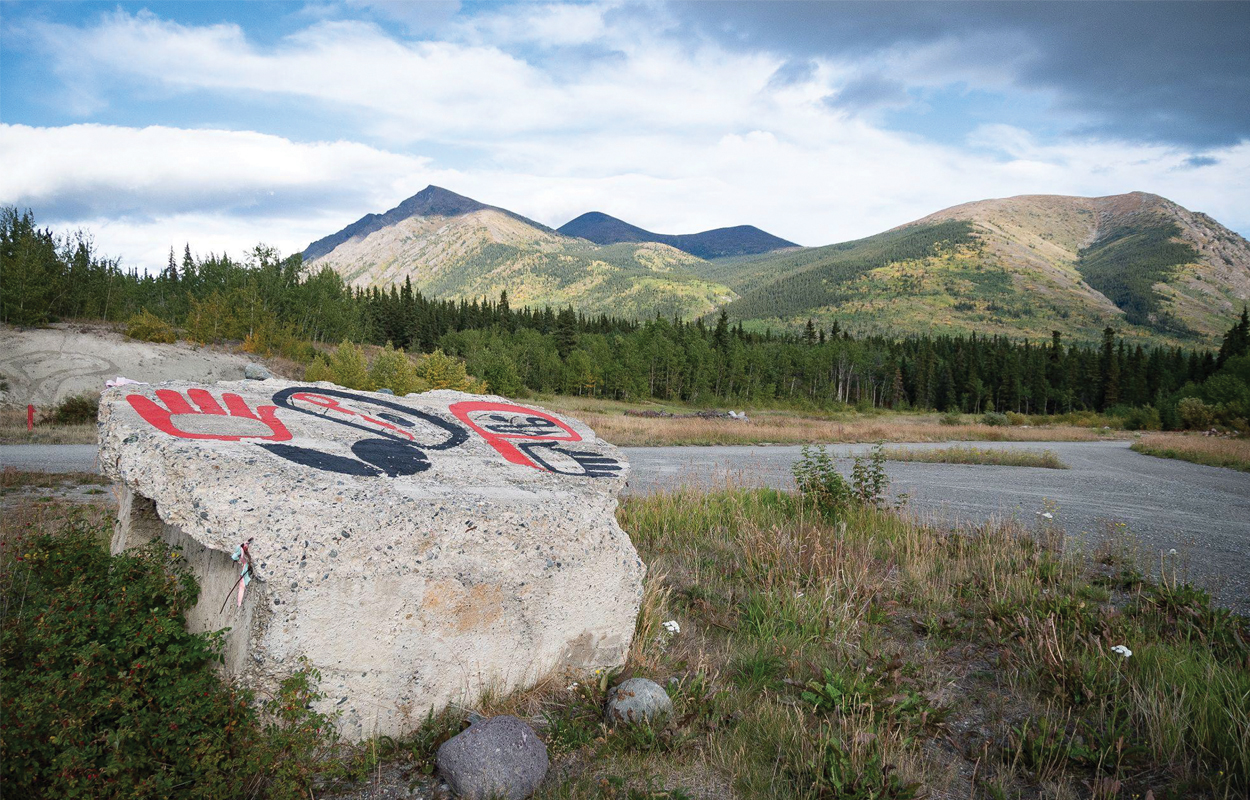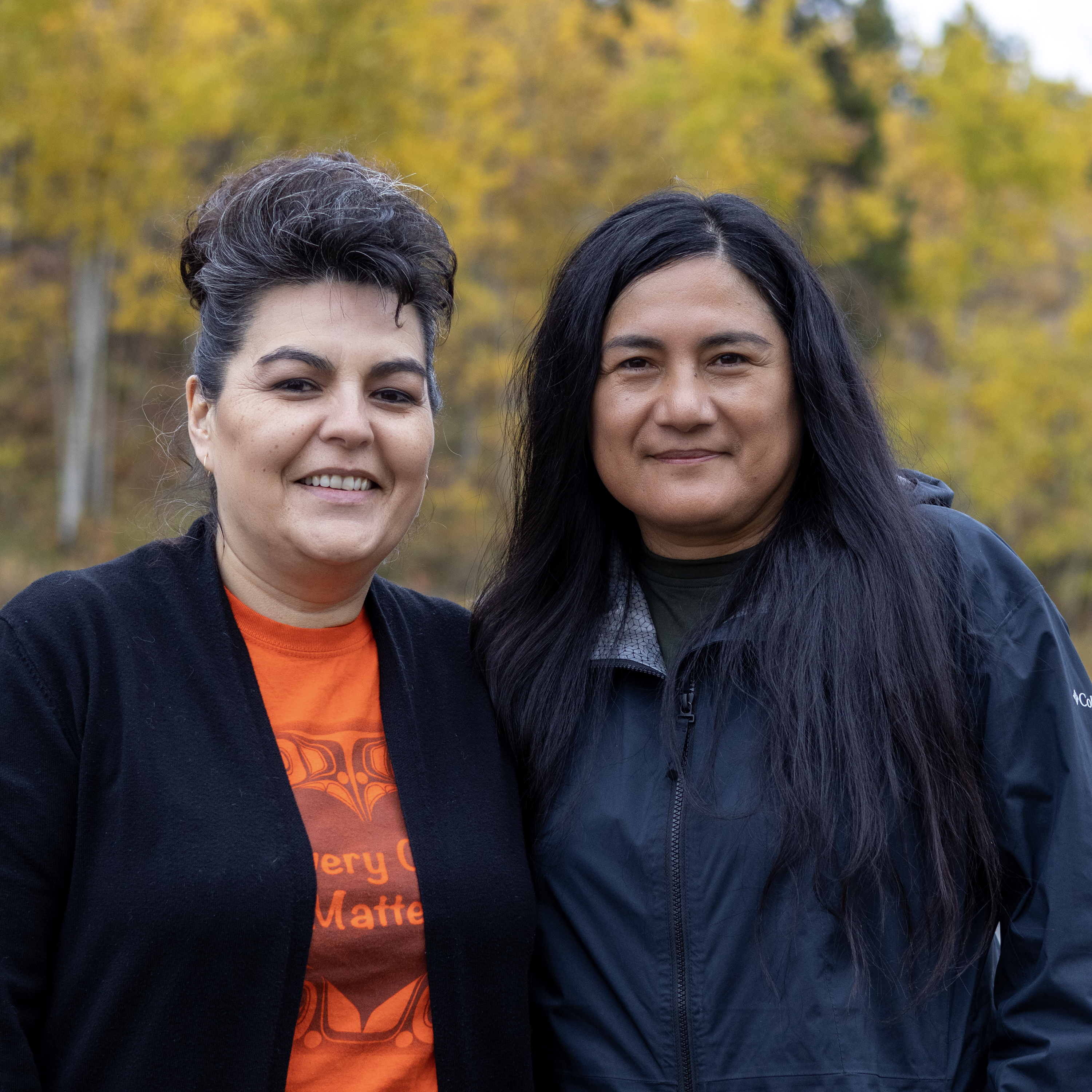
Pathways: Localizing curriculum in the Yukon
Flora Asp moved to the Yukon 26 years ago from Eabametoong First Nation in northern Ontario.
For years, she taught K-12 in rural Yukon. Flora says her passion for teaching and education came from her mother, who taught Ojibwe in northern Ontario for many years.
Tammy Stoneman is from the Nisichawayasihk Cree Nation in northern Manitoba. She has lived in the Yukon for 15 years.

Flora and Tammy are First Nations Curriculum Consultants. Their roles include: coordinating K-12 curriculum projects; collaborating with local First Nations on curriculum and resource development; teaching educators and school administrators about the First Nations ways of knowing, doing and being; and orienting new teachers on the importance of working with local First Nations to bring local perspectives into classrooms.
Tammy says the education system is currently being reimagined to support First Nations students.
She says the Truth and Reconciliation Commission's report provided motivation across Canada for provincial and territorial education departments to refocus their priorities.
Tammy says those priorities include localizing curriculum to reflect First Nations ways of knowing, doing and being.
Tammy StonemanEducation for First Nations students needs to be holistic, inclusive and student-centered.
Centered in place
In response to the historical and contemporary marginalization of First Nations students, education is shifting towards a more localized curriculum.
Curriculum and resources built on local knowledge and traditions can enhance student growth and also support ongoing learning opportunities for educators. Localization holds space for First Nations knowledge and perspectives to be explored in the classroom and school.
Tammy says embedding First Nations ways of knowing, doing and being is connected to positive change and school improvement.
“Schools that respect, support and implement the languages and cultures of First Nations learners demonstrate better academic outcomes,” she says.
As First Nations Curriculum Consultants, Flora and Tammy represent an important First Nations lens that is more focused on place.
“Each community has different values in the way they’re connected to their land, water and teachings,” says Flora. “We always keep the curriculum local to each area.”
She says when she’s working on curriculum, she thinks about two things: the place where the material will be taught and how to work together with the community.
“It’s important to work with local Elders, Knowledge Keepers and educators when developing resources,” Flora says. “I follow their lead, because they know the place as well as cultural values and traditions.”
Teachers and other educators are also present throughout the curriculum development process.
“The Elders always reiterate the message that everyone needs to be part of this work from the beginning,” Tammy explains.
Localizing curriculum
A Curriculum Working Group was created by the Yukon government to help develop and review materials and resources for educators across the territory.
The group is made up of Elders and Knowledge Keepers from the eight Yukon First Nations language groups.
When Flora and Tammy have a curriculum baseline, they sit with members of the working group to listen to their stories and experiences connected to the subject.
Flora says her job is to listen.
“We listen and take notes,” she says. “There’s no time limit. We listen until all of their stories are shared.”
From there, Flora and Tammy begin drafting the curriculum.
Once there’s a draft, they put a call out to educators who teach the subject in the area to join the working group.
The group works together to ensure the curriculum is localized to the area and also that educators have an understanding of the material, especially if they aren’t from the area.
“Educators not from the Yukon need to be open to learning about the importance of place," says Flora.
To get it right, she says the working group is involved in every stage of development.
In a good way
Localizing curriculum is always done in partnership with Elders and Knowledge Keepers, as well as local educators and First Nations.
Tammy says it’s essential that the work is a collaboration with partners and done ‘in a good way.’
“'In a good way’ is an expression used by many First Nations, meaning that the work honours tradition and spirit,” she says. “From a First Nations worldview, work done ‘in a good way’ is a sacred endeavour that illuminates the connections between the spiritual and physical worlds.”
This approach embodies traditions, practices and protocols. Teachings of wisdom, love, respect, bravery, honesty, humility, and truth are important pieces in this work.
Tammy says the work would not be possible without collaborating with partners.
Strengthening relationships with First Nations
Many individuals struggle to understand how the history of Indigenous Peoples and colonization continues to impact the reality of present-day Canada.
“It’s important that leaders and educators reflect on their own position of privilege and work to build better relationships with First Nations,” Tammy says.
Trine Dennis is the Principal of Hidden Valley Elementary School in Whitehorse. She has been teaching in the Yukon since almost 10 years ago.
Trine says her relationships with Yukon First Nations communities have guided her work in the classroom.
“My most influential teachers are the Elders and Knowledge Holders I’ve met over the years,” she says. “Without these relationships, I may not have had the confidence to develop a localized curriculum based on Yukon First Nations ways of knowing, doing and being.”
Shifting the education system away from the colonial structure is essential to help First Nations students succeed.
Tammy says without it, the system will continue to fail them.
“Today’s reality is that education and curriculum reflects the dominant culture,” she says. “Collaborating with First Nations is necessary to create mentorship, training and build an inclusive and culturally reflective education system.”
Making big structural changes to the education system will take time.
While that change is underway, Flora and Tammy continue to work with local Elders, Knowledge Keepers and educators.
Working together, they’re localizing curriculum to include more First Nations’ perspectives and helping students to better understand Canada’s complex history and culture.
